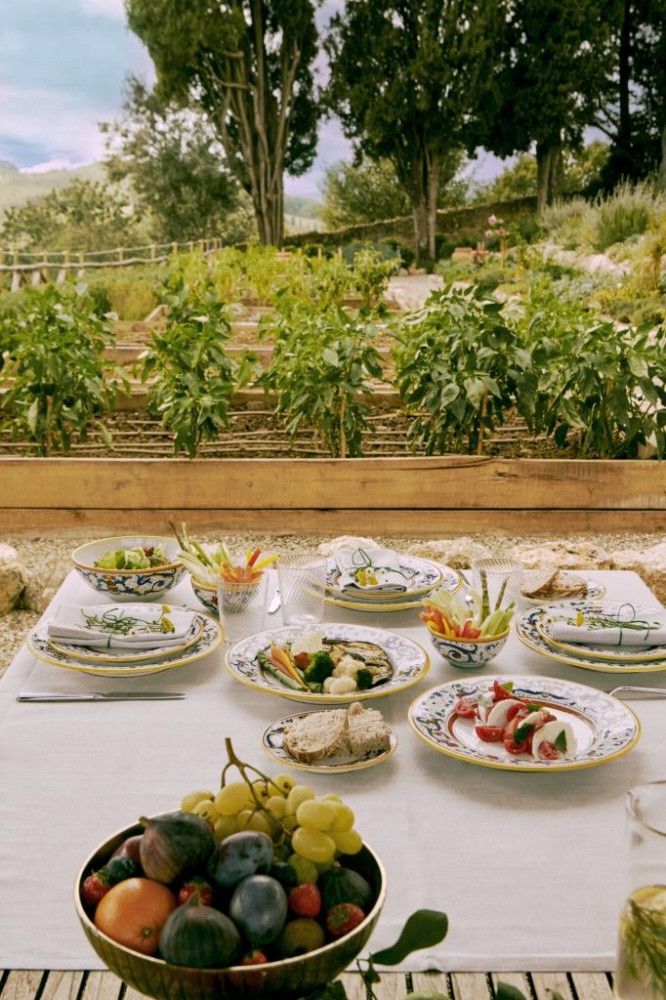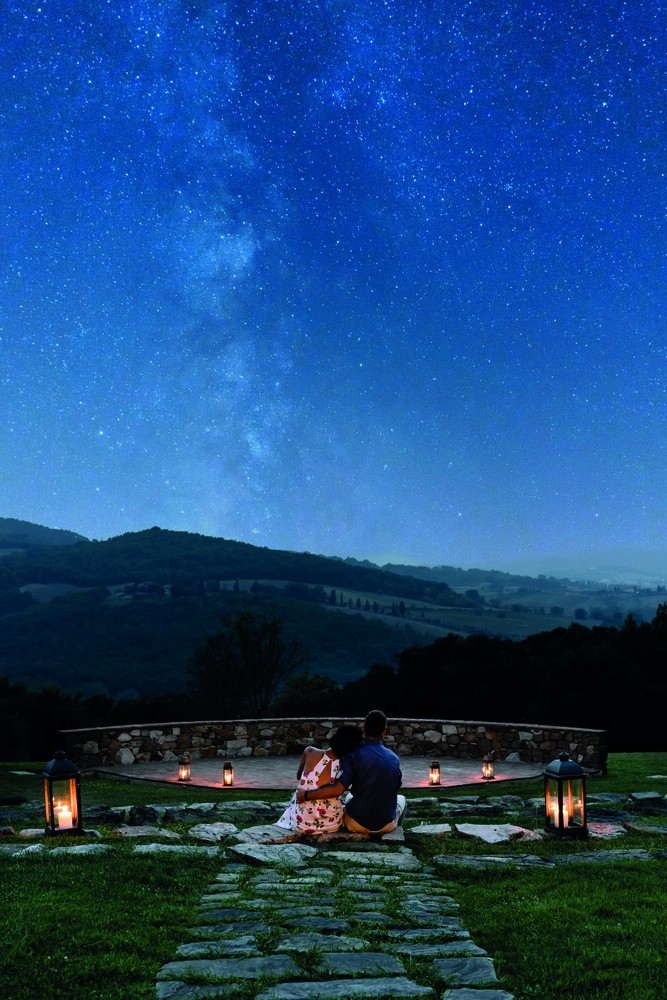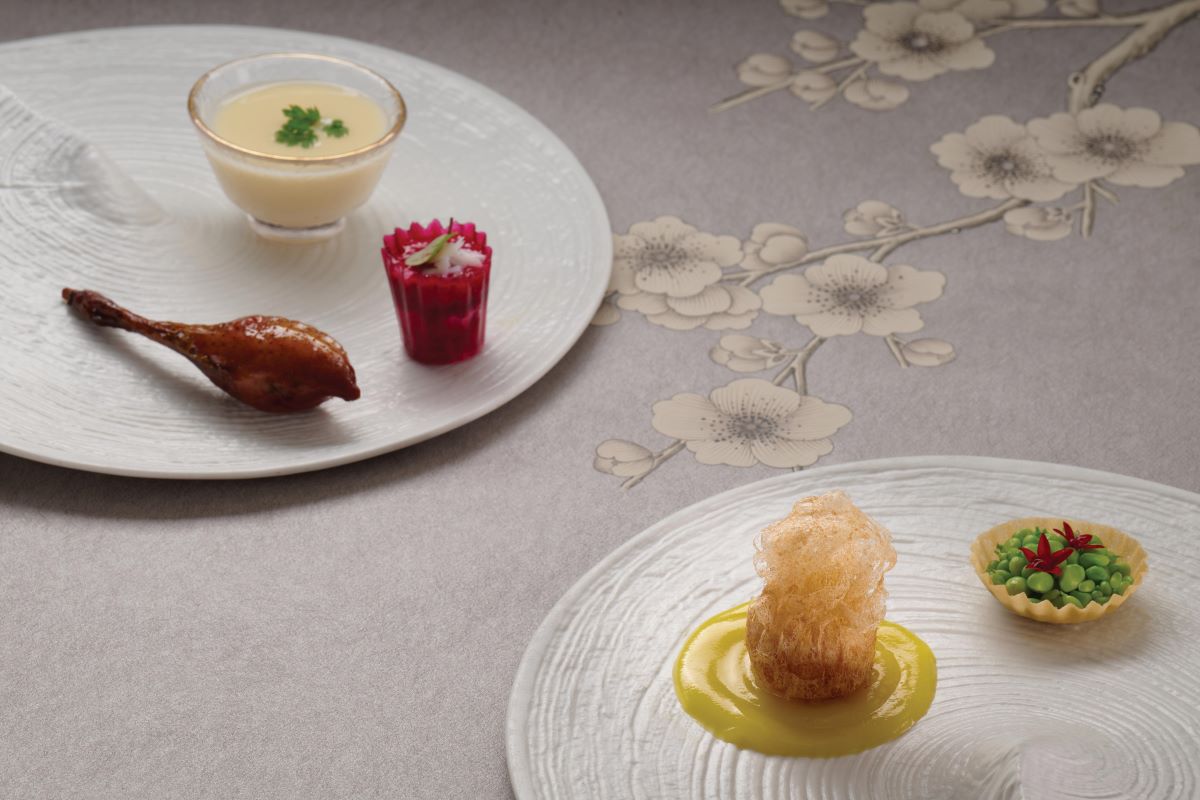A contemporary luxury hotel set in a 10th-century castle, Castello di Casole offers the best of Italy from past to present. David Ho indulges in rural life under the welcoming Tuscan sun

Tucked deep in the Tuscan countryside, Belmond’s Castello di Casole draws on the picturesque charms of its sprawling surroundings to deliver the magic of rural Italy. Located an hour away from Florence, the hotel is set in a 10th-century castle formerly owned by a noble family. With vineyards and olive groves dotting the undulating hills and valleys surrounding it, the Italian retreat is every bit as dreamy as it sounds.
For starters, the reception faces a rose garden with blooms in every shade imaginable. We are told the yellow roses are a speciality of the estate. It’s easy to imagine a wedding photo shoot, or a dramatic music video shoot in the vein of Mariah Carey’s “We Belong Together”, happening here. A picnic can be arranged on request, with a basket of treats prepared by the hotel’s executive chef Daniele Sera.
On some evenings, the hotel organises a table on the edge of the garden with treats and a chandelier dangling overhead from a tree for an enchanting experience. It makes the perfect setting to pop important questions to a significant other, so this might just be the place to book if you are looking for that.
After checking in, we immediately make our way to the pool, which is open from April to November when it is perfectly heated to 27 degrees. Given that it was rainy when we made our way there from Florence, the warm waters are a treat in the cool of the day and a welcome wake-up after the trek. But what really sells it is the view of the lush green fields and hills of Tuscany, best enjoyed from the edge of the infinity pool. Cue the Instagram posing.

After a refreshing splash and uploading the requisite poolside posts, I finally venture to my designated suite. I wander to where the suites are located, which are within buildings that make up a former village in the compounds. Mine is in the Case del Prete, the previous living quarters of the priests who lived on the estate, between a former church and school. The spacious quarters have now been restored and decorated in a rustic Tuscan style, complete with local antiques, warm hues and modern amenities. I’m particularly delighted by the presence of the tub and make a mental note to enjoy a soak later with the bath salts and rose infusion gathered from Castello di Casole’s own rose garden.
The grounds of the Belmond hotel are huge – 4,200 acres to be exact – making it one of the largest private estates in Italy. With so much land, the hotel makes full use of it to be a self-sustaining unit. The staff make their own wine, honey and olive oil, and the ingredients from the gardens make it a truly farm-to-table experience at the restaurants on site. Our meals at Tosca restaurant and Orto del Castello, the vegetable garden of the property, consist of hearty Italian fare made with the fresh produce grown on the grounds. Even the simple stuff gets us going, such as dipping freshly baked bread into the estate’s own extra virgin olive oil. I’m particularly intrigued by Tuscan specialities, with the panzanella – a salad of tomatoes, herbs, onions and bread soaked in water – being a simple but filling affair.

The next morning, after a good Millennial breakfast of avocado toast, I head out into the sunshine for some cycling. Luckily, we are supplied with electric bikes as the hills are no joke and it calls upon all our spin-class training and motivation. I discover a small lake and spend some time admiring the views before heading back for the next activity of eco print making.
We are introduced to Marianna Sauro of Anima di Foglia (the studio’s Italian name translates to “soul of the leaf”), an artist from the nearby commune of Casole d’Elsa, whose creations are sold in the hotel’s boutique. She introduces us to her method of making eco prints on silk from fresh flowers. I gather roses from the hotel’s gardens (mindfully and with intent, I must add) and get around to making my artistic masterpiece – a silk handkerchief with a rose-bloom print – that I send home to Mum with my postcards.
Also see: Belmond and Galleria Continua revitalise historical sites with art
It’s easy to stay within the hotel grounds and vegetate in their comfort and splendour, especially in the giant strollers by New York-based artist Nari Ward in key spots around the estate as part of Belmond and Galleria Continua’s Project Mitico. But I’ve been told that villages in Tuscany are where it’s at, so I decide to swap out an afternoon of massages and beauty indulgences at the spa for a visit to one.
Though one can bike there, I opt for a short and fast car ride to get to Casole d’Elsa, where our floral print maker resides. Once a historic Etruscan settlement, the village is now home to a community of artists and galleries. But I’m here to visit its archaeological museum – the Etruscan Museum – as part of an experience the hotel offers called “Living like an Etruscan”. Marco Bezzini, an expert on Etruscan history, guides us through the treasures there. Guests can usually visit Etruscan tombs in the surrounding area to learn about the ancient civilisation’s life and death customs. But we are short on time, so a quick visit to the museum and a stroll through the village is all I can afford for this part of the trip.

Aperitivos at sunset at Castello di Casole are a glam but still chill affair. On our last night, I put on my best outfit and head to the bar, where drinks and food are served. Sitting on a couch, chatting with new friends and watching the sun set over the Tuscan countryside with a plate of delicious gnocchi pomodoro e basilico is a life choice I highly recommend.
Even with my own exciting travel plans to look forward to, I leave Castello di Casole with great reluctance and a better understanding of the Tuscan countryside’s magic. It can be an oasis of peace, a romantic getaway, a destination of nature and art, or a mix of all the above.
Also see: Belmond and Galleria Continua revitalise historical sites with art






